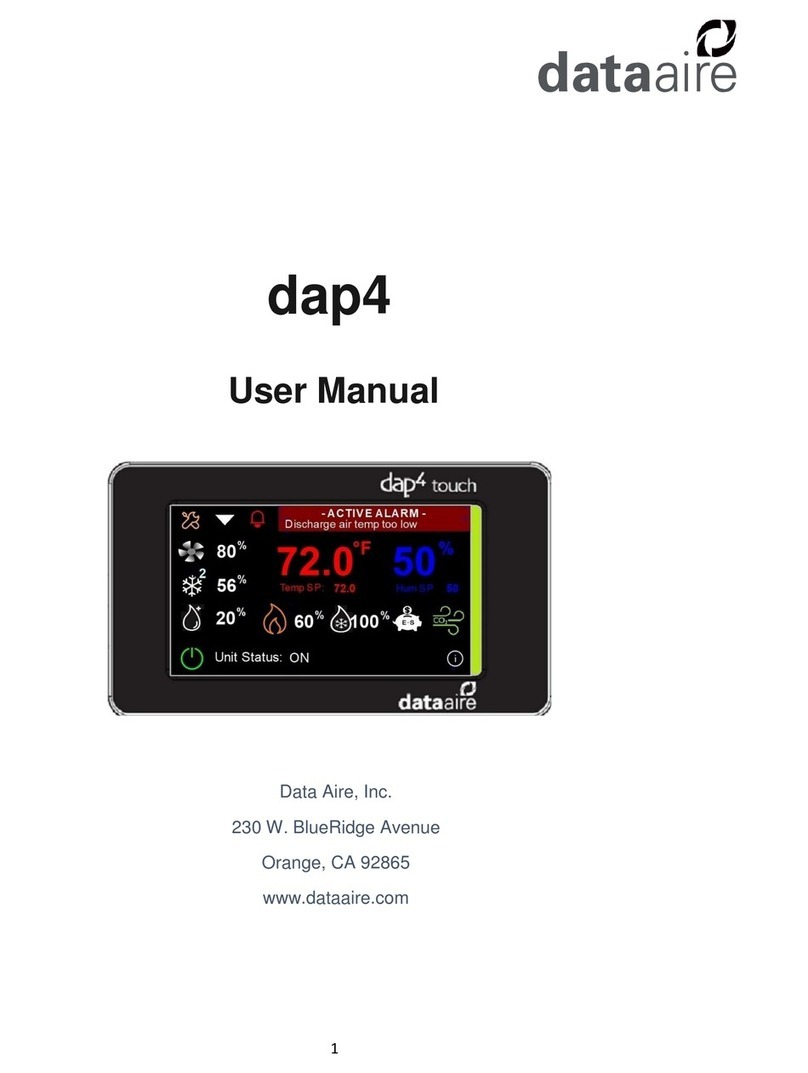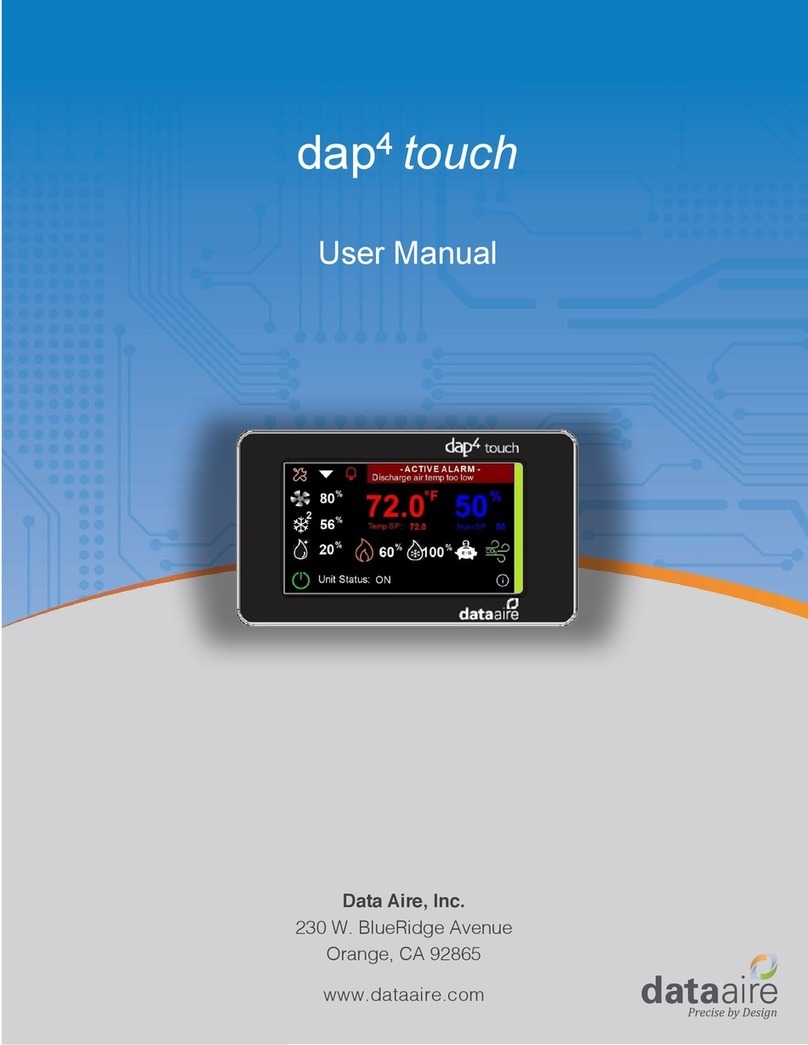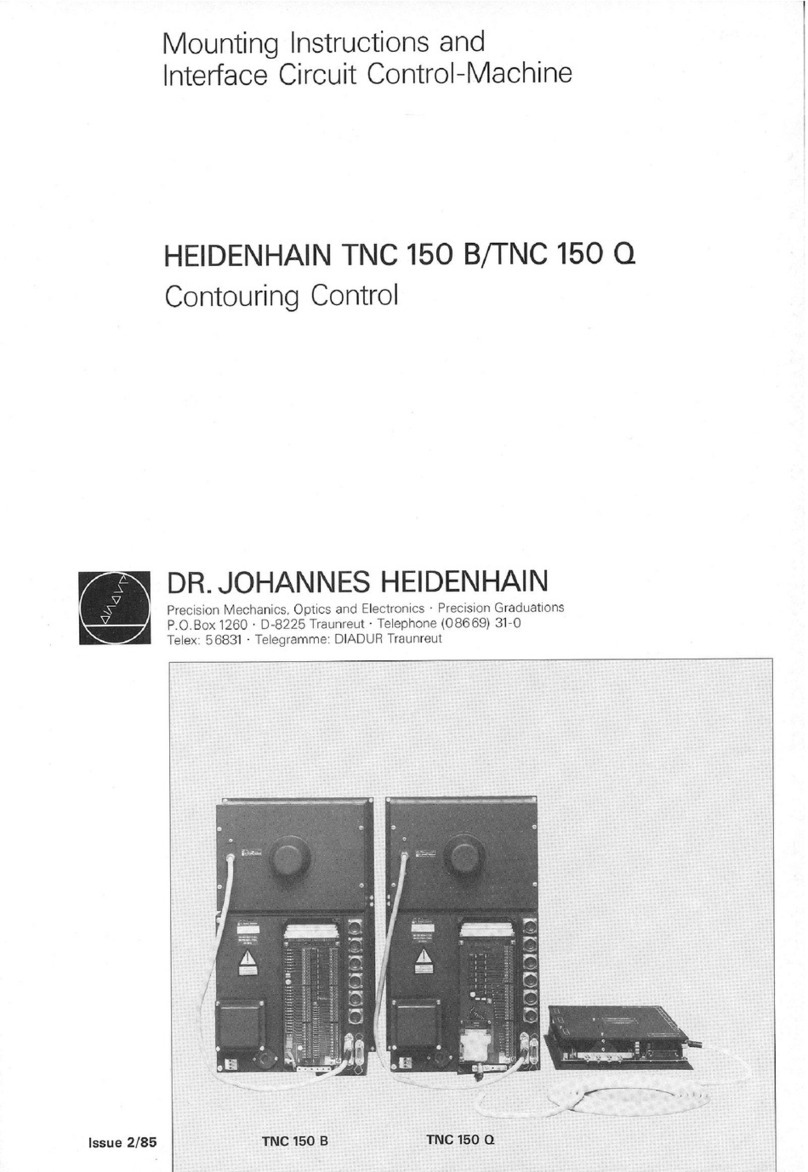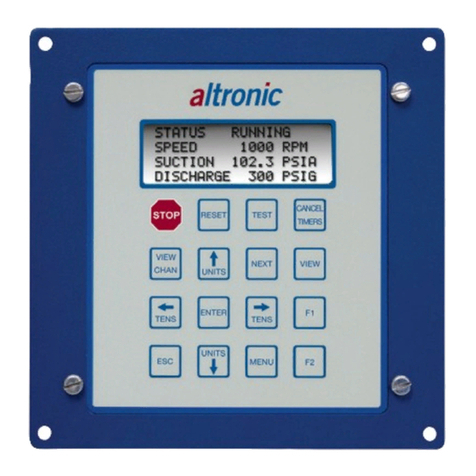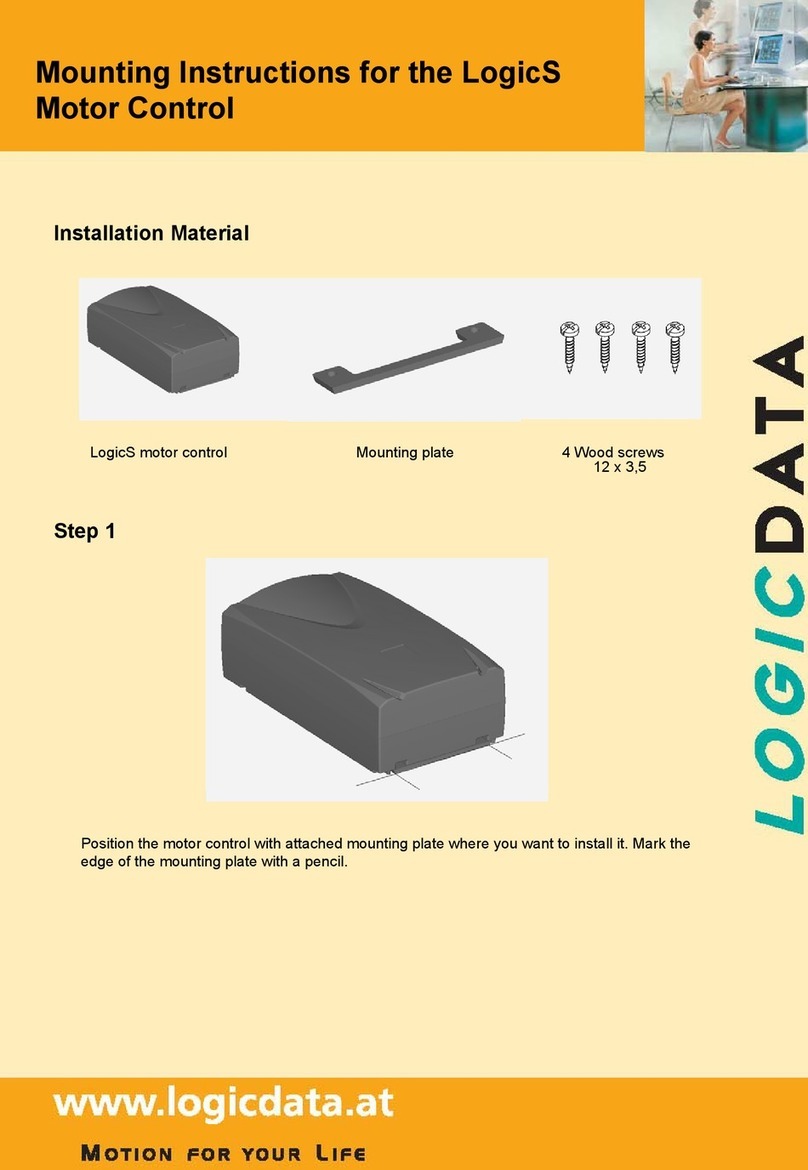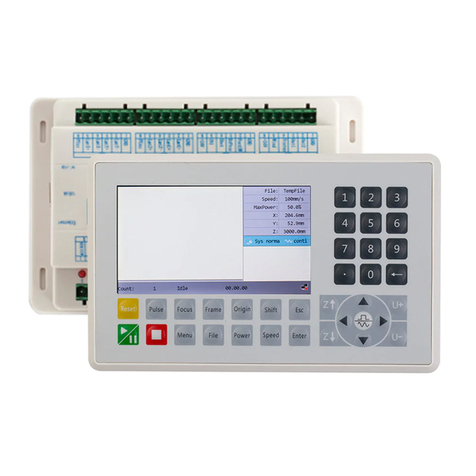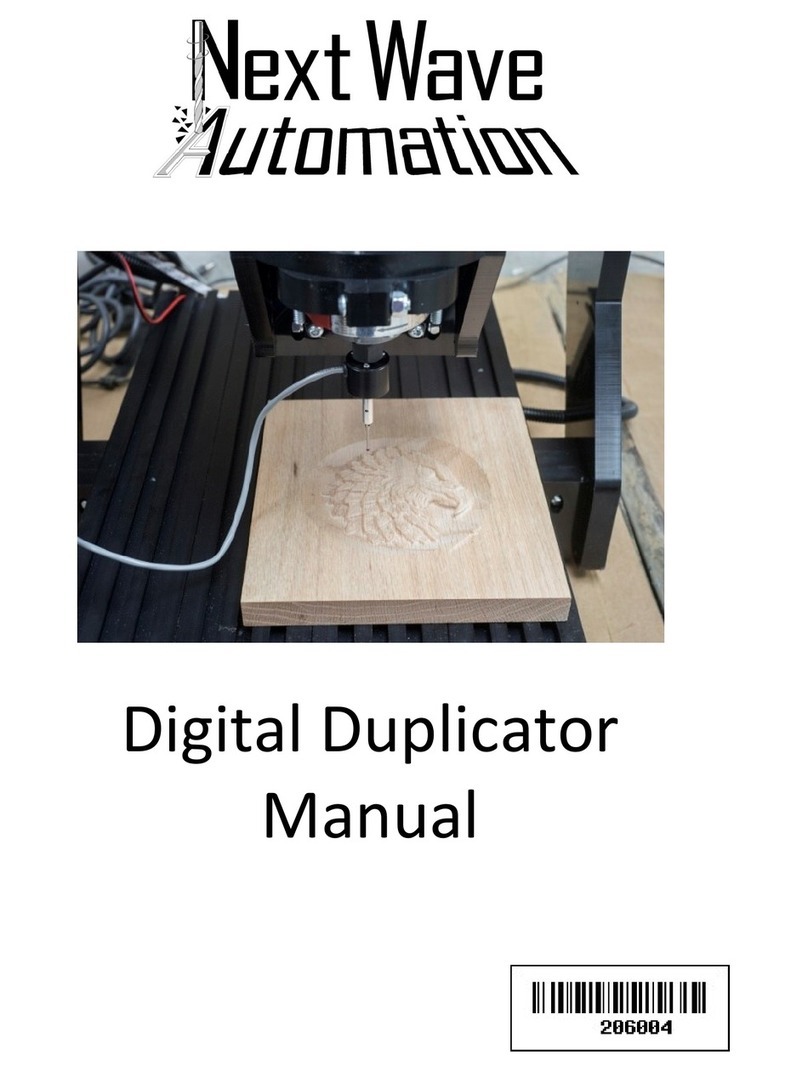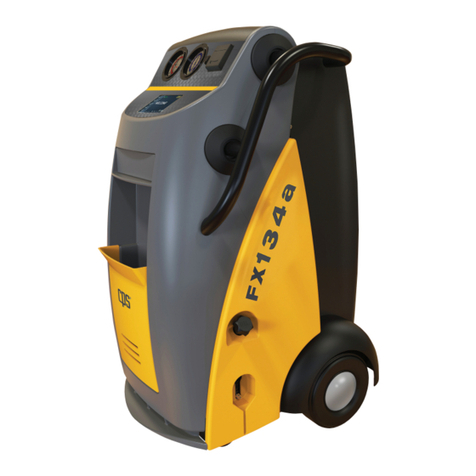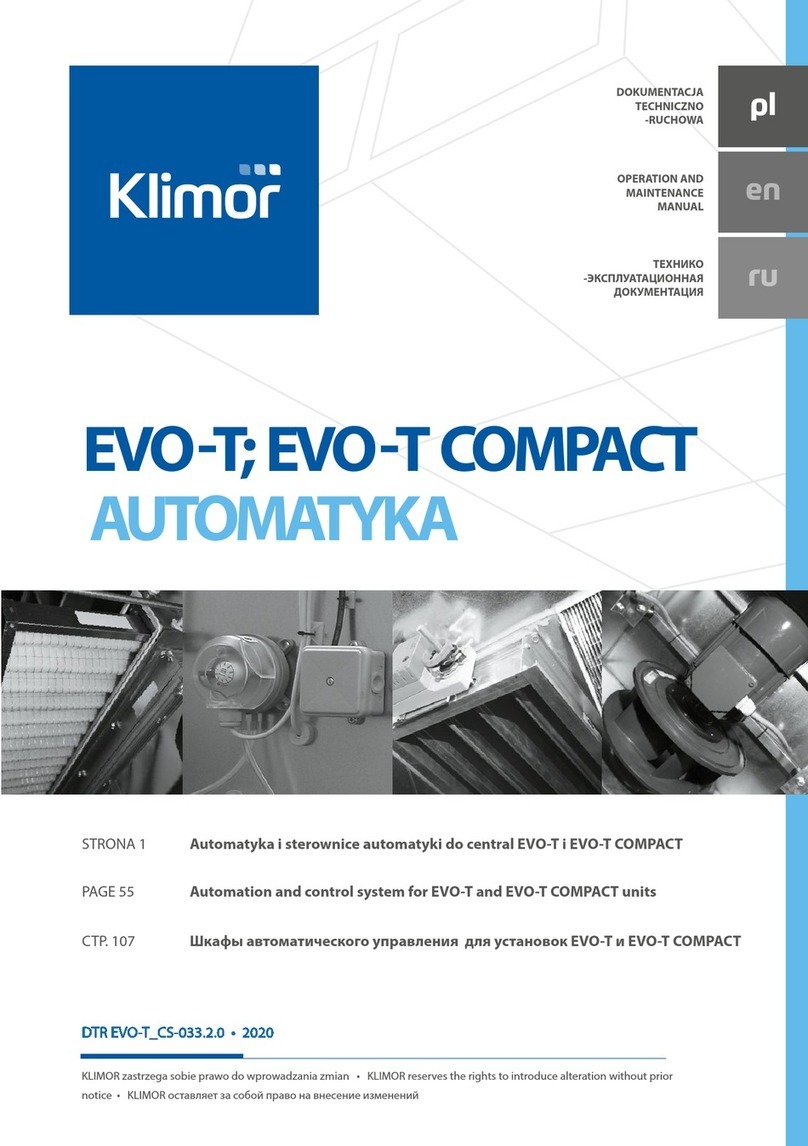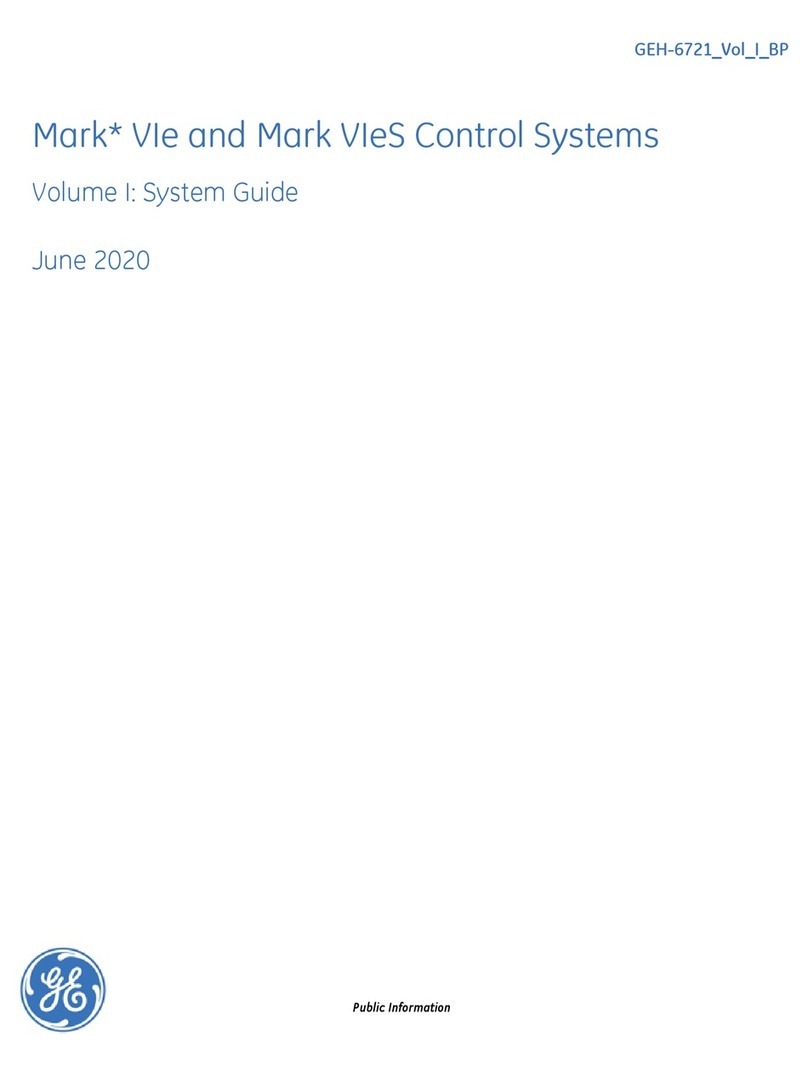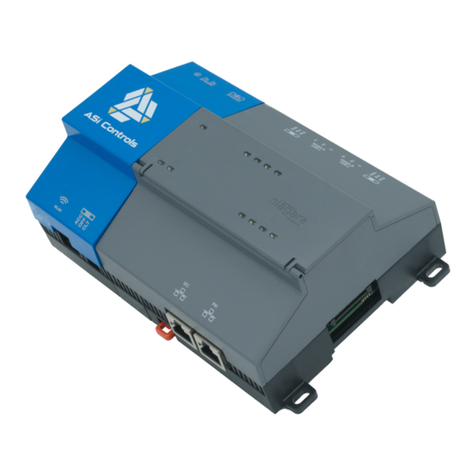Data Aire gPod Instruction manual

Installation, Operation and Maintenance Manual
Page ii
VERSION HISTORY
Version #
Implemented By
Revision Date
Approved By
Approval
Date
Reason
1.0
A Tran, T Marwitz
06/03/2019
Ted Marwitz
06/07/2019
Initial Release
CONGRATULATIONS ON THE SELECTION OF A DATA AIRE PRECISION ENVIRONMENTAL CONTROL SYSTEM. PROPER
ADHERENCE TO THIS INSTALLATION, OPERATION AND MAINTENANCE MANUAL FOR THIS EQUIPMENT WILL ENSURE
YEARS OF OPTIMAL PERFORMANCE.
There are separate installation, operation, and maintenance (IOM) manuals for other components of your Data Aire
precision cooling system including dap4 or Mini-dap4, air-cooled condensers, and fluid coolers.
This manual is intended to assist trained service personnel by providing necessary guidelines for this equipment.
Service to Data Aire units should be done by qualified individuals with an adequate background in areas such as
HVAC, electrical, plumbing and electronics, as applicable.
Service performed by unauthorized or unqualified technicians may void manufacturers’ warranties and could result
in property damage and/or personal injury.
Data Aire, Inc. reserves the right to make design changes for the purposes of product improvement, or to withdraw
any design without notice.
©Copyright 2019 Data Aire Inc. all pages and content

Installation, Operation and Maintenance Manual
Page iii
IMPORTANT SAFETY INSTRUCTIONS - SAVE THESE INSTRUCTIONS
Safety Alert Symbols and Words for Hazard Alerting Safety
DANGER indicates a hazardous situation which, if not
avoided, will result in serious injury or death.
WARNING indicates a hazardous
situation
which, if
not avoided, could
result
in serious injury or de
ath.
CAUTION indicates a hazardous
situation
which, if
not avoided, could result
in
minor or moderate
injur
y.
NOTICE indicates
information
considered
important
but may have potential hazard for
personal injury or property damage. Special care
should be given to those areas where these symbols
appear.
During installation, operation, maintenance or service, individuals may be exposed to certain components or
conditions including, but not limited to: refrigerants, oils, and materials under pressure, rotating components, and
both high and low voltage. Each of these items has the potential, if misused or handled improperly, to cause bodily
injury or death. It is the obligation and responsibility of operating/service personnel to identify and recognize these
inherent hazards, protect themselves, and proceed safely in completing their tasks. Failure to comply with any of
these requirements could result in serious damage to the equipment and the property in which it is situated, as
well as severe personal injury or death to themselves and people at the site.
This document is intended for use by owner-authorized operating/service personnel. It is expected that this
individual possesses independent training that will enable them to perform their assigned tasks properly and safely.
It is essential that, prior to performing any task on this equipment, this individual shall have read and understood
this documentand any referenced materials. This individual shall also be familiar with and comply with all applicable
governmental standards and regulations pertaining to the task in question.
This manual contains important safety instructions that should be followed during the installation and maintenance
of Data Aire equipment. Read this manual thoroughly before attempting to install or operate this unit.
Only qualified personnel should move, install or service this equipment. Adhere to all warnings, cautions and
installation, operating and safety instructions on the unit and in this manual. Follow all operating and user
instructions.
WARNING Risk of electric shock can cause injury or death. Disconnect local and
remote electrical power before working within unit.
Customer must provide earth ground to unit, per NEC, CEC and local codes, as
applicable. Before proceeding with installation, read all instructions, verify that
all the parts are included and check the nameplate to be sure the voltage
matches available utility power.

Installation, Operation and Maintenance Manual
Page iv
WARNING The Data Aire dap4 or Mini-dap4 microprocessor does not isolate
power from the unit, even in the “Unit Off” mode. Some internal components
require and receive power even during the “Unit Off” mode of Data Aire dap4™
control.
The factory-supplied optional disconnect switch is located inside the unit’s
electrical control panel. The supply voltage side of the disconnect switch
contains live high voltage. The only way to ensure that there is NO voltage inside
the unit is to install and open a remote facility disconnect switch.
WARNING Risk of explosive discharge from high-pressure refrigerant. Can cause
injury or death. This unit contains fluids and gases under high pressure. Relieve
pressure before working with piping.
WARNING Risk of refrigerant system rupture or explosion from over
pressurization can cause equipment damage, injury or death.
WARNING Risk of contact with high-speed moving parts can cause injury or
death. Disconnect all local and remote electric power supplies before working
in the unit. Do not operate unit with any or all cabinet panels removed. Do not
operate up flow units without installing a plenum, ductwork or guard over the
blower opening(s) on the top surface of the unit cabinet. Ductwork must be
connected to the blower(s), or a plenum must be installed on the blower deck
for protection from rotating blower wheel(s) on up flow units.
CAUTION Risk of contact with hot surfaces can cause injury. The compressors,
refrigerant discharge lines, humidifiers and reheats are extremely hot during
unit operation. Allow enough time for them to cool before working within the
unit cabinet. Use extreme caution and wear protective gloves and arm
protection when working on or near hot compressors, discharge lines,
humidifiers and reheats.
CAUTION Risk of handling heavy andlengthy parts can cause personal injury and
equipment damage. Follow relevant OSHA lifting recommendations and
consider using a two-person lift for safe and comfortable removal and
installation of cabinet panels. Only properly trained and qualified personnel
wearing appropriate safety headgear, gloves and shoes should attempt to
remove or install cabinet panels.
NOTICE Risk of clogged or leaking drain lines can cause equipment and building
damage. This unit requires a condensate water drain connection. Drain lines
must be inspected regularly and maintenance must be performed to ensure
that drain water runs freely through the drain system and that lines are clear

Installation, Operation and Maintenance Manual
Page v
and free of obstructions and in good condition with no visible sign of damage or
leaks. Improper installation, application and service practices can result in water
leakage from the unit. Water leakage can result in severe property damage and
loss of critical data center equipment. Do not locate unit directly above any
equipment that could sustain water damage. Data Aire recommends installing
leak detection equipment for unit and supply lines.
NOTICE Risk of a leaking coil due to freezing and/or corrosion can cause
equipment and serious building damage. Cooling and heat rejection coils, heat
exchangers and piping systems that are connected to open cooling towers or
other open water/glycol systems are at high risk for freezing and premature
corrosion. Fluids in these systems must contain the proper antifreeze and
inhibitors to prevent freezing and premature coil corrosion. The water or
water/glycol solution must be analyzed by a competent water treatment
specialist before startup to establish the inhibitor requirement. The water or
water/glycol solution must be analyzed every six months to determine the
pattern of inhibitor depletion. The complexity of water-caused problems and
their correction makes it important to obtain the advice of a water treatment
specialist and follow a regularly scheduled maintenance program.
NOTICE Installation and maintenance must be performed only by qualified
personnel who are familiar with this type of equipment.
WARNING Refrigerant can be harmful if it is inhaled. Refrigerant must be used
and recovered responsibly. Failure to follow this warning may result in personal
injury or death.
CAUTION Do not operate doors when unit is not on a flat surface.
WARNING Pressure-relief line must be vented to the atmosphere per the latest
edition of ASHRAE standard and/or any local building, fire or mechanical codes.
This is for units with shell and tube and units with high pressure relief valve.
NOTICE Maintain a minimum clearance of 36 inches or width of the unit
whichever is larger.
NOTICE Altering, modification or equal of our product may void warranty and
or void regulatory certification(s). Field rearrangement of components are not
recommended.

Installation, Operation and Maintenance Manual
Page vi
NOTICE Any installation of an auxiliary device shall not require the cutting,
wiring or the soldering of connections by the installer, and shall not require
cutting, drilling or welding in the electrical enclosure(s) and in other areas where
such operations may damage electrical or refrigeration components and wiring.
CAUTION For replacement of fuses, replace with same size fuse size and type
or equivalent.
NOTICE Data Aire products are strictly for non-residential applications.
NOTICE Using substitute parts or bypassing electrical or refrigeration
components is not recommended and will VOID THE WARRANTY.
NOTICE Using substitute parts or bypassing electrical or refrigeration
components is not recommended and will VOID THE WARRANTY.
NOTICE TO CUSTOMER/CONTRACTOR PROTECT YOUR WARRANTY PRIOR TO
STARTUP.
• Read and follow the Installation & Start-up Instructions provided with this
equipment.
• Storage of this equipment must be on a flat surface and protected from the
weather.
• Protect this equipment from damage, construction dirt, debris, freezing
temperatures and water.
• Make sure all shipping materials have been removed.
• A qualified startup technician must complete the Data Aire “Field start up
test sheet”

Installation, Operation and Maintenance Manual
Page vii
Table of Contents
1INTRODUCTION............................................................................................................................................. 1
PRODUCT INFORMATION -WHAT IS GPOD? ........................................................................................................ 1
MODEL IDENTIFICATION NOMENCLATURE........................................................................................................... 1
1.2.1 Ceiling Mounted Units....................................................................................................................... 1
1.2.2 Floor Mounted Units ......................................................................................................................... 1
DELIVERY INSPECTION..................................................................................................................................... 2
PAPERWORK................................................................................................................................................. 2
2INSTALLATION............................................................................................................................................... 3
RECOMMENDED TOOLS FOR INSTALLATION ......................................................................................................... 3
PRE-INSTALLATION......................................................................................................................................... 3
2.2.1 Room Considerations ........................................................................................................................ 4
LOCATING FLOOR UNITS.................................................................................................................................. 4
2.3.1 Upflow Units ..................................................................................................................................... 6
2.3.2 Horizontal Airflow Units .................................................................................................................... 7
2.3.3 Indoor Condensers ............................................................................................................................ 8
STORAGE ..................................................................................................................................................... 8
2.4.1 Suggested Reference Storage Room Conditions ................................................................................. 9
2.4.2 General Storage Considerations ........................................................................................................ 9
FIELD PIPING CONNECTIONS INSTALLATION ........................................................................................................10
ELECTRICAL INSTALLATION ..............................................................................................................................10
REFRIGERATION SETUP ..................................................................................................................................10
2.7.1 Leak Test..........................................................................................................................................11
SYSTEM CONTROL SETUP................................................................................................................................11
POST INSTALLATION ......................................................................................................................................11
INSTALLATION OF REMOTE HEAT EXCHANGER.................................................................................................12
VOLTAGE PHASE CHECK .............................................................................................................................12
2.11.1 Evaporator Power Phasing ...........................................................................................................12
2.11.2 Remote Heat Exchanger...............................................................................................................12
3PIPING..........................................................................................................................................................13
REFRIGERANT PIPING.....................................................................................................................................13
SPLIT AIR-COOLED UNIT PIPING.......................................................................................................................15
3.2.1 Discharge Lines ................................................................................................................................15
3.2.2 Liquid Lines ......................................................................................................................................16
3.2.3 Line Traps: .......................................................................................................................................16
3.2.4 Field Piping, Remote Condenser Above Evaporator...........................................................................17
3.2.5 Field Piping, Remote Condenser Below Evaporator ...........................................................................18
3.2.6 Connection Sizes, Air-Cooled Units....................................................................................................18
RECOMMENDED LINE SIZING FOR AIR-COOLED SPLIT SYSTEMS ...............................................................................19
3.3.1 Hot Gas Lines: Single Circuit Units (Up to 200 Equivalent Feet) .........................................................19
3.3.2 Liquid Lines: Single Circuit Units (Up to 200 Equivalent Feet).............................................................19

Installation, Operation and Maintenance Manual
Page viii
3.3.3 Total Equivalent Line Length Calculation ..........................................................................................20
POST PIPING INSTALLATION ............................................................................................................................20
WATER/GLYCOL COOLING UNIT PIPING.............................................................................................................20
3.5.1 Field Piping, Water/Glycol System....................................................................................................21
3.5.2 Connection Sizes, Water/Glycol Cooled Units....................................................................................22
CO2PIPING.................................................................................................................................................22
CONDENSATE DRAIN PIPING ...........................................................................................................................22
3.7.1 Condensate Trap ..............................................................................................................................23
HUMIDIFIER PIPING.......................................................................................................................................24
LEAK TESTING ..............................................................................................................................................24
EVACUATION...........................................................................................................................................25
3.10.1 Evacuation Procedures.................................................................................................................25
4CHARGING ...................................................................................................................................................27
AIR COOLED SYSTEMS....................................................................................................................................27
4.1.1 Packaged Air-Cooled Systems Ceiling Units (2.5 to 5 Ton) .................................................................27
4.1.2 Split Air-Cooled Systems Charging (Units with Indoor Condenser or Outdoor Condenser) ..................28
4.1.3 Flooded System Charging .................................................................................................................29
REFRIGERANT HANDLING................................................................................................................................31
5ELECTRICAL CONNECTIONS ..........................................................................................................................32
GENERAL ELECTRICAL FIELD WIRING GUIDELINES.................................................................................................33
ELECTRICAL SERVICE......................................................................................................................................33
NAMEPLATE RATINGS....................................................................................................................................34
GROUNDING................................................................................................................................................34
VOLTAGE TOLERANCE....................................................................................................................................34
STANDARD ELECTRICAL CONNECTIONS ..............................................................................................................35
CONTROLLERS..............................................................................................................................................35
5.7.1 Floor Mounted Units ........................................................................................................................35
5.7.2 Ceiling Mounted Units......................................................................................................................35
AUXILIARY CONTROL WIRING..........................................................................................................................36
REMOTE SHUTDOWN ....................................................................................................................................37
REMOTE ALARM CONTACTS........................................................................................................................37
5.10.1 Mini-dap4 Controller....................................................................................................................37
5.10.2 dap4 Controller............................................................................................................................37
REMOTE TEMPERATURE AND HUMIDITY SENSOR.............................................................................................38
CONDENSATE PUMP (OPTIONAL).................................................................................................................38
CONDENSATE PROBE (STANDARD ON FLOOR UNITS AND OPTIONAL ON CEILING UNITS) ..........................................39
FLOAT SWITCH (CEILING UNITS) ..................................................................................................................39
UNDER-FLOOR WATER DETECTION CABLE (OPTIONAL).....................................................................................39
DISCONNECT SWITCH (OPTIONAL) ...............................................................................................................39
MANUAL OVERRIDE SWITCH BOARD (DAP4ONLY)..........................................................................................40
WIRING DIAGRAMS ..................................................................................................................................40
PLUG FAN “NO AIRFLOW ALARM”CURRENT SENSING SWITCH (PLUG FAN UNIT ONLY) ..........................................41
5.19.1 "No Airflow" Switch Adjustment...................................................................................................41

Installation, Operation and Maintenance Manual
Page ix
6IMPORTANT COMPONENTS.........................................................................................................................44
REMOTE HEAT EXCHANGER ............................................................................................................................44
REFRIGERATION COMPONENTS........................................................................................................................44
6.2.1 Expansion Valve ...............................................................................................................................44
6.2.2 High Pressure Cutout Switch.............................................................................................................44
6.2.3 Low Pressure Cutout Switch..............................................................................................................44
CONTROLS ..................................................................................................................................................44
6.3.1 Mini-dap4 Controller (Ceiling Units)..................................................................................................44
6.3.2 dap4 Controller (Floor Units) ............................................................................................................44
7GENERAL MAINTENANCE REQUIREMENTS ..................................................................................................46
DAILY MAINTENANCE ....................................................................................................................................46
SCHEDULED MAINTENANCE ............................................................................................................................46
REMOVING DOORS AND PANELS FOR MAINTENANCE (FLOOR UNITS).......................................................................47
ELECTRONICALLY COMMUTATED (EC) MOTORS (EC MOTORS)...............................................................................48
7.4.1 EC Plug Fan Manual Test (Units with a dap4 Controller Only) ...........................................................48
7.4.2 Protective Features ..........................................................................................................................48
7.4.3 EC Plug Fan Maintenance.................................................................................................................49
UNITS WITH BELT DRIVEN BLOWERS.................................................................................................................49
7.5.1 Belts.................................................................................................................................................49
7.5.2 Bearings...........................................................................................................................................49
AIR FILTERS .................................................................................................................................................50
7.6.1 Upflow Unit Air Filter Replacement Procedure..................................................................................50
7.6.2 Ceiling Unit Air Filter Replacement Procedure...................................................................................51
HUMIDIFIER.................................................................................................................................................51
7.7.1 Humidifier Cannisters.......................................................................................................................51
7.7.2 Cylinder Spent Fault .........................................................................................................................51
7.7.3 Replacement Cylinder.......................................................................................................................51
7.7.4 Preparing Humidifier for Extended Shutdown Duration.....................................................................55
7.7.5 Starting Humidifier after Extended Shutdown...................................................................................55
HUMIDIFIER DRAIN PAN.................................................................................................................................56
CONDENSATE PUMP......................................................................................................................................56
FUSES ....................................................................................................................................................56
REHEATING ELEMENTS...............................................................................................................................56
REFRIGERANT FILTER DRIER ........................................................................................................................56
CABINET.................................................................................................................................................57
7.13.1 Exterior Cabinet Maintenance- Cleaning ......................................................................................57
COILS.....................................................................................................................................................57
7.14.1 Coil Cleaning ................................................................................................................................57
PIPING ...................................................................................................................................................57
WATER/GLYCOL COOLED SYSTEM................................................................................................................58
STANDARD WATER/GLYCOL FLOW SWITCH REPLACEMENT................................................................................58
7.17.1 Mounting the Flow Switch............................................................................................................59
DX COMPONENT REPAIR OR REPLACEMENT ...................................................................................................59

Installation, Operation and Maintenance Manual
Page x
7.18.1 Compressor Checklist ...................................................................................................................60
7.18.2 Fixed Speed Scroll Compressor Replacement ................................................................................61
7.18.3 Refrigerant Filter Drier .................................................................................................................63
7.18.4 Thermostatic Expansion Valve (TXV) Replacement .......................................................................64
7.18.5 Refrigerant Liquid Line Solenoid Valve (LLSV) Replacement ..........................................................65
ELECTRICAL COMPONENT MAINTENANCE/REPLACEMENT..................................................................................66
ELECTRICAL CONTROL PANEL ......................................................................................................................67
FUSES ....................................................................................................................................................67
7.21.1 Fuse Replacement........................................................................................................................67
ELECTRIC REHEAT WITH MODULATING SCR CONTROL (SPECIAL OPTION) .............................................................68
7.22.1 Electric Reheat Element Checklist .................................................................................................68
RUN OR START CAPACITOR REPLACEMENT .....................................................................................................68
DEFINITE AND GENERAL PURPOSE CONTACTOR REPLACEMENT...........................................................................70
CONTROL AND ISOLATION TRANSFORMER REPLACEMENT..................................................................................70
PLUG FANS WITH ELECTRONICALLY COMMUTATED (EC) MOTORS (EC)................................................................71
SMOKE DETECTOR MAINTENANCE ...............................................................................................................72
7.27.1 Smoke Detector Testing ...............................................................................................................72
7.27.2 Cleaning Smoke Detector .............................................................................................................73
CONTROLS ..............................................................................................................................................73
TEMPERATURE AND HUMIDITY SENSOR MAINTENANCE ....................................................................................74
7.29.1 Disposal of Temperature and Humidity Sensor .............................................................................74
MINI-DAP4OR DAP4CONTROLLER REPLACEMENT...........................................................................................74
8LOW AMBIENT RECEIVER PACKAGE .............................................................................................................75
REFRIGERANT RECEIVER .................................................................................................................................76
APPLICATIONS..............................................................................................................................................76
SELECTION GUIDELINES..................................................................................................................................76
SAFETY RELIEF DEVICES..................................................................................................................................77
REFRIGERANT RECEIVER INSTALLATION..............................................................................................................77
HEAD PRESSURE CONTROL .............................................................................................................................77
RECEIVER LEVELS ..........................................................................................................................................77
RECEIVER HEATERS .......................................................................................................................................78
RECEIVER HEATER ELECTRICAL WIRING..............................................................................................................78
9GPOD ADDITIONAL FEATURES .....................................................................................................................79
DAY/NIGHT CONTROL ...................................................................................................................................79
CO2CONTROL .............................................................................................................................................79
10 WARRANTY POLICY......................................................................................................................................80
11 CONTACT DATA AIRE ...................................................................................................................................81
12 SUPERHEAT AND SUCTION PRESSURE TROUBLESHOOTING GUIDE..............................................................82
LOW SUCTION PRESSURE AND HIGH SUPERHEAT .............................................................................................82
HIGH SUCTION PRESSURE AND LOW SUPERHEAT.............................................................................................82
LOW SUCTION PRESSURE AND LOW SUPERHEAT..............................................................................................82

Installation, Operation and Maintenance Manual
Page xi
Table of Figures
Figure 1 - Typical Lifting Method ............................................................................................................................ 5
Figure 2 - Typical Clearance Near Walls.................................................................................................................. 5
Figure 3 - Example of a Suspended Cradle Type Mounting ..................................................................................... 7
Figure 4 - Typical Discharge Line Check Valve........................................................................................................16
Figure 5 - Remote Condenser Above Evaporator...................................................................................................17
Figure 6 - Remote Condenser Below Evaporator ...................................................................................................18
Figure 7 - Typical Water/Glycol System .................................................................................................................21
Figure 8 - Recommended Condensate Trap Dimensions........................................................................................23
Figure 9 - Typical Grounding Lug ...........................................................................................................................34
Figure 10 - Typical Remote Heat Exchanger Interconnection Points.......................................................................36
Figure 11 - Typical Indoor Evaporator Interconnection Points ...............................................................................37
Figure 12 - Typical Mini-dap4 Remote Alarm Contact Terminals............................................................................37
Figure 13 - Typical dap4 Remote Alarm Contact Terminals ....................................................................................38
Figure 14 - Current Sensing Switch........................................................................................................................41
Figure 15 - CT Trip Adjustment and LEDs ...............................................................................................................42
Figure 16 - Door Top Section with Spring Hinge.....................................................................................................47
Figure 17 - Typical Spring Latches..........................................................................................................................48
Figure 18 - Typical Top of Humidifier Cylinder View...............................................................................................52
Figure 19 - Typical Steam Humidifier.....................................................................................................................53
Figure 20 - Typical Humidifier Drain Valve.............................................................................................................54
Figure 21 - Typical Drain Valve Assembly...............................................................................................................54
Figure 22 - Typical Receive Package Assembly.......................................................................................................76

Installation, Operation and Maintenance Manual
Page 1of 100
1INTRODUCTION
Product Information - What is gPod?
The gPod is the indoor agriculture industry’s first all-in-one true precision environmental control system. It
provides consistent temperature, humidity, dehumidification, and CO2control for users to achieve successful
yield after yield.
•Floor or ceiling configuration
•CO2control
•Light sensor
•Web-based control on any smart device
•Temperature and dehumidification control
For detailed control logic of the CO2, light sensor, and Night/day scheduling, please see Mini-dap4 or dap4 IOM
addendum section.
Model Identification Nomenclature
1.2.1 Ceiling Mounted Units
1.2.2 Floor Mounted Units

Installation, Operation and Maintenance Manual
Page 2of 100
Condenser: (Condenser coil only, no compressor): The order write-up should have the condenser unit model
number. Refer to applicable condenser model number identification.
Example: gPod unit, air cooled, upflow, 10-ton, 3 phase/230 volts, split system with outdoor condenser:
Evaporator model: GPAU-1032
Condenser model: GHRC-03932
Delivery Inspection
Data Aire equipment has been factory run-tested and has gone through a comprehensive inspection prior to its
packaging and shipment to ensure that it arrives in excellent condition. However, shipping damage can occur and a
visual inspection of the outer crating immediately upon delivery should be performed. Upon arrival of the unit and
before unpacking it, verify that the labeled equipment matches the bill of lading.
NOTICE Document any external packaging damage or transportation
damage on the freight carrier’s forms. Inspect the unit itself for internal
damage. A claim should be filed with the shipping company if the
equipment is damaged or incomplete.
Loose items such as remote display, disconnect switch handles, condensate pumps, spare belts, spare filters, etc.
are packed inside the unit. Refer to the manila shipping tag located on the unit panel for details.
NOTICE Freight damage claims are the responsibility of the purchaser.
Action to recover losses should be filed immediately. Please notify
factory personnel of any claims.
Paperwork
Each Data Aire unit ships with a startup sheet that should be completed during installation. Also included in the
paperwork is a warranty/information packet that provides important wiring diagrams, specific component
literature, warranty registration cards and other valuable paperwork, including a copy of this Installation, Operation
and Maintenance manual.
A manila (yellow) tag is attached to the outside panel to indicate articles that may have been packaged and shipped
loose within the unit cabinet. Typically, this would be a jack stands, condensate pump and other loose components
that are not factory mounted.
WARNING It is the responsibility of the installing contractor to return the start-
up sheet and warranty registration card to Data Aire for proper activation of the
unit warranty. Failure to do so may cause delays in replacement parts or Service
support.

Installation, Operation and Maintenance Manual
Page 3of 100
2INSTALLATION
CAUTION Risk of handling heavy and lengthy parts, risk of top-heavy unit falling
over, risk of sharp edges, splinters and exposed fasteners; can cause personal
injury and equipment damage. Cabinet doors and panels can weigh more than
35lb. (15.9kg) therefore follow relevant OSHA lifting recommendations and
consider using a two-person lift for safe and comfortable removal and
installation of cabinet doors and panels.
NOTICE Only properly trained and qualified personnel wearing
appropriate safety headgear, gloves and shoes should attempt to
remove or install cabinet doors and panels.
There is no intent on the part of Data Aire, Inc. to define local codes or statutes which may supersede common
trade practices. The manufacturer assumes no responsibility for their interpretation. Consult local building codes
and National Electrical Code (NEC) for special installation requirements.
Recommended Tools for Installation
Wrenches –Common sizes
Flat tip and Phillip screwdriver –Common sizes
Wiring tools
Brazing tools
Multi-meter
Pressure gauges –Sized for design pressure
Electric hand tools
Equipment handing
Safety items
Leveler
Pre-Installation
The unit you have received is specifically designed for indoor environmental control. This unit is designed and
intended to be installed indoors in a conditioned space unless otherwise noted on the equipment serial name plate.
Compare the data on the nameplate of the air-conditioning unit and other modules with the packing list and the
order documents.
Backdraft dampers should be considered if multiple units are being installed with a common duct system. On floor
units with plug fans, there is an AirSeal feature that will act as a virtual backdraft damper by running the fans at
minimal speed. A damper or AirSeal will prevent cold air from flowing backwards through a unit that is offline or in
standby.

Installation, Operation and Maintenance Manual
Page 4of 100
2.2.1 Room Considerations
Precision air conditioning equipment is designed to control spaces within close tolerances of temperature and
humidity. However, the room must be built with a proper vapor barrier. A film of polyethylene is often used on
walls and ceilings. Walls and floors must also be painted with a vapor seal paint. All doors to the controlled space
should be equipped with weather seals to prevent the infiltration of non-neutral conditioned air from external
spaces. Failure to provide a vapor barrier can compromise the ability to control space conditions.
Reference: See the Mini-dap4 or dap4 Installation, Operating and Maintenance Manual (IOM) for allowable
operating conditions and ranges.
Introduction of outside air into the space should be minimized. Outside air more than 5% of the total circulated air
volume can have a significant effect on the overall space conditions and result in poor space control. All outside air
that is introduced should be conditioned to the humidity and temperature parameters of the environmental control
unit set points to maintain proper room conditions and to prevent the units from running excessively to maintain
the room’s conditions.
For floor units, verify that the floor is level and solid enough to support the unit.
The equipment must be level to operate properly and prevent damage to the internal components. Shimming
and/or grouting may be necessary. This is to ensure the unit base is on a perfectly flat plane.
For ceiling units, verify the unit is level or slightly pitched towards the condensate drain, solid, and supported. It is
recommended that support is structurally engineered to prevent flexing, sagging or twisting. Do not obstruct door
operation, filter access, piping, electrical controller enclosure or control connections with suspension members.
For all units, avoid the transfer of vibrations to the mounting materials which may cause audible noise.
Locating Floor Units
Move the unit in its upright position to the installation site. It is recommended that the unit be protected from
damage to the doors during any storage or moving. Removal of the doors is easily accomplished using the spring-
loaded upper hinge and lifting the fixed lower hinge pin on the bottom of the door up and out of the lower hinge
plate. The doors may be removed without moving the equipment.
The shipping skid should be left in place if the unit is being moved with a forklift. If the unit is being lifted, use
spreader bars to prevent damage to the doors and panels. If necessary, remove the doors prior to lifting the unit.

Installation, Operation and Maintenance Manual
Page 5of 100
Figure 1 - Typical Lifting Method
The unit has 3/4” holes in the shipping skid to which casters with 3/4” stems can be attached. This allows easy
movement down halls, into elevators and through doorways.
WARNING Improper lifting or moving of equipment may result in damage to
doors, panels or frame members.
When installing the unit, enough space must be allowed for airflow clearance, wiring, plumbing and service access.
It is recommended that each side and front have a clearance of at least 36” or 40”, depending on the unit, to allow
the doors to swing open and for servicing the unit.
The doors on some sides may not require as much service clearance. Refer to the unit component breakdown
drawings for assistance. Rear clearance is not required, but 1” to 2” of clearance is suggested.
Figure 2 - Typical Clearance Near Walls

Installation, Operation and Maintenance Manual
Page 6of 100
For the best air distribution, the unit should be centered against the longest wall, distributing the cold air as close
to heat load as possible, unless the unit is ducted. The unit should not be placed near any corner of the room or at
the end of a long, narrow room. Multiple units should be evenly spaced, as far apart as possible.
NOTICE Condensation formation and frequent humidifier flushing are
normal functions of this equipment. Proper drain connections must be
made to ensure proper removal. Unit will require water connections for
condensate removal and possibly for humidifier makeup water, chilled
water and/or hot water. Installation of units above equipment that
could sustain water damage should be avoided.
2.3.1 Upflow Units
All floor mounted gPods have an upflow configuration.Upflow units will typically be supported by vibration isolation
pads and/or floor stands which may also include leveling screws. An air discharge plenum may be factory provided
which ships loose and must be attached at the top of the unit frame.
Alternately, an air distribution plenum must be field fabricated with supply grilles to distribute the air. Units are
shipped with Electronically Commutated (EC) motors and “plug fans”. Fan speed is factory set based on order. Fan
speed can be changed in 1% increments through the unit’s microprocessor controller, Data Alarm Processor 4
(dap4). Other fan speed control options are available, and some require optional hardware to facilitate the optional
control. See the dap4 operation manual for details and recommended settings.
Locating Ceiling Units
The unit is intended for above the ceiling installation and is typically suspended from structural members in the
building above the ceiling. The Design Engineer must determine the necessary strength of the supporting structures
and follow national and local building codes.
Appropriate service access above the ceiling is required around all service and electrical access panels. There must
be unobstructed clearance below the unit allowing ladder access to enable routine maintenance and service.
Consult local building codes and National Electric Code for special installation requirements.
NOTICE There are many available unit configurations for ceiling mounted
gPods. Be sure to identify the unit type and style before installing. For
instance, there may be split condenser sections requiring separate or
shared power.
NOTICE Condensation formation and frequent humidifier flushing (when
humidifier is installed) are normal functions of this equipment. Drain
connections must be made to ensure proper water removal. Unit will
require drain connections for condensate removal and water
connections possibly for humidifier (when installed) makeup water,
condenser water, chilled water and/or hot water. Installation of units
above equipment that could sustain water damage should be avoided.

Installation, Operation and Maintenance Manual
Page 7of 100
2.3.2 Horizontal Airflow Units
All ceiling mounted gPod units have horizontal airflow configuration. Field supplied, and installed ductwork is
intended to be connected to the factory provided duct collars on the supply and return air openings.
Ceiling units are shipped with a drive packages pre-set at the factory to overcome approximately 0.5” WC external
static pressure. But the blower speed may need to be re-adjusted in the field for actual site and space conditions.
There are various options to allow mounting of ceiling units. These must be pre-determined by the Design Engineer
based on site conditions and available installation options. One method is to hang the ceiling mounted units by
means of a cradle type installation. This method requires four (4) field supplied threaded hanging support rods
which must be securely attached to the building structure and two (2) field provided lower support channels
connected to the pairs of threaded hanging support rods. An appropriate lifting device must be used to raise the
evaporator section into place before attaching to the mounting system. Use caution and appropriate safety
methods when making such a lift. Attaching hardware such as washers, nuts and jam nuts are also field supplied to
secure the mounting system to each threaded rod. Tighten the nuts so the weight is supported evenly by the four
rods and the unit is level or slightly pitched towards the location of condensate drain.
Figure 3 - Example of a Suspended Cradle Type Mounting

Installation, Operation and Maintenance Manual
Page 8of 100
2.3.3 Indoor Condensers
Smaller air-cooled units (2.5 to 5-ton) are available with either an indoor condenser section or an outdoor
condenser. While most air-cooled units have outdoor condensers, indoor condensers are occasionally used. The
indoor condenser sections are to be mounted in a similar manner as the evaporator sections. Indoor air-cooled
condensers have factory provided duct collars on the supply and intake air openings as appropriate to allow
connection of the field supplied duct systems.
Typical installations have the indoor or outdoor condenser near or adjacent to the evaporator section especially
when shared electrical power is required. The same service and maintenance requirements apply to these units as
well.
Storage
NOTICE (Important) This storage section is not intended to be a comprehensive
guide for all possible issues associated with construction conditions,
construction stage, and indoor environment, how interior spaces are
maintained and other factors affecting the equipment storage. Each installation
is unique.
Short-term storage is considered 60 days or less from shipment date. Long-term storage is considered any period
beyond 60 days from date of shipment. It is mandatory that a detailed record be maintained during this long-term
period, such as, but not limited to: proper sealing of the cabinet, rotation of the blowers and bearings, and
protection of all motors from moisture. Check the fan rotation monthly, the fan and motor should be rotated several
times to replenish the bearing surfaces with fresh grease as needed and to prevent flat spots of the fan shaft. The
fan impeller should be left at approximately 180° from that of the previous month to prevent the belts from taking
a set position.

Installation, Operation and Maintenance Manual
Page 9of 100
It will be the responsibility of the customer to submit a monthly log sheet showing the condition of the unit and
noting any discrepancies. A copy of the log sheet should be sent to Data Aire. Failure to perform the long-term
storage requirements may void the warranty.
2.4.1 Suggested Reference Storage Room Conditions
This information is provided for reference and guidance purposes only.
•Dry bulb temperature range: 65°F to 85°F
•Effects of high temperatures may dry out components or may damage electrical components.
•Effects of low temperatures may cause freezing damage to coil, compressor, system components, electrical
components, etc. Freezing temperatures must be avoided.
•Humidity range: 25 to 50% RH
•High humidity may cause damage to insulation and electrical components. Storage in moist air, above 50%,
should be avoided. High humidity may cause rust on metal components such as sheave, pulley, blower
housing, cabinet parts, supports, etc.
•Low Humidity may cause brittle conditions to components within the unit. At low humidity, problems of
brittleness or electrical static might arise for the equipment.
•Level with floor.
•Units with compressor maximum tilt angle is 30° (compressor not running) but recommend the unit be set
level for 24 hours prior to final installation.
•Store at non-condensing temperature and humidity conditions.
2.4.2 General Storage Considerations
•All equipment shall be stored for safety of occupants. Per OSHA codes and codes applicable to your
installation.
•Maintain clearance from working space and traffic areas.
•Our indoor products are not designed or intended to be stored outdoors or exposed to outdoor conditions.
•Components sealed in plastic shrink-wrap are not exempt from this requirement. Moisture will collect
inside the plastic, resulting in corrosion of the cabinet, the electronic components and or other water
sensitive components.
•Provide proper fire protection per local and national codes.
•Protect from all water or fluid sources. Equipment should be protected from possible water damage, such
as from leaks, fire-sprinkler discharge, and flooding.
•The storage space should be filtered to remove dust, cleansed of gaseous contaminants, if present, and
controlled to the desired relative humidity and temperature.
•Isolate this equipment from pressure testing of water, steam, gas and air piping.
•Isolate this equipment from temporary building power.
•The unit must also be protected from damage to the exterior of the cabinet or coil connections by
construction vehicles and personnel.
•Isolate from vibration sources.
•Isolate from direct sun light.
•Isolate from storage of hazardous materials and substances.
Table of contents
Other Data Aire Control System manuals
Popular Control System manuals by other brands
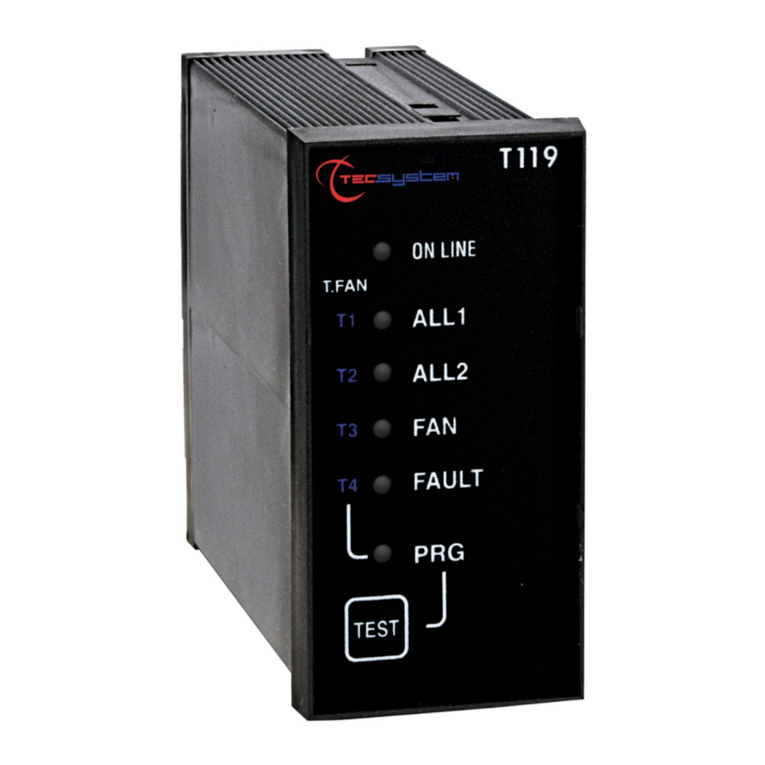
TECSYSTEM
TECSYSTEM T119 Setup and Programming

Renova
Renova turborex TXP 180 operating instructions

On Automation
On Automation ORIS 500 instruction manual
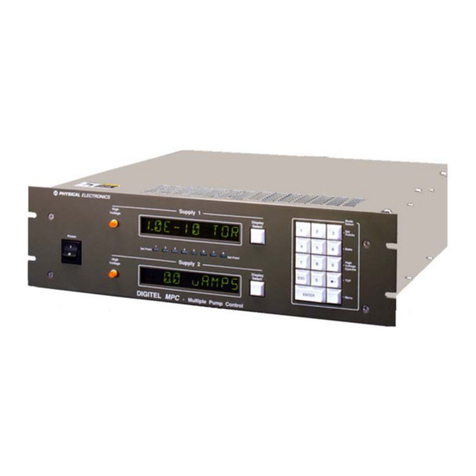
Gamma Vacuum
Gamma Vacuum Digitel MPC 635941 Technician manual
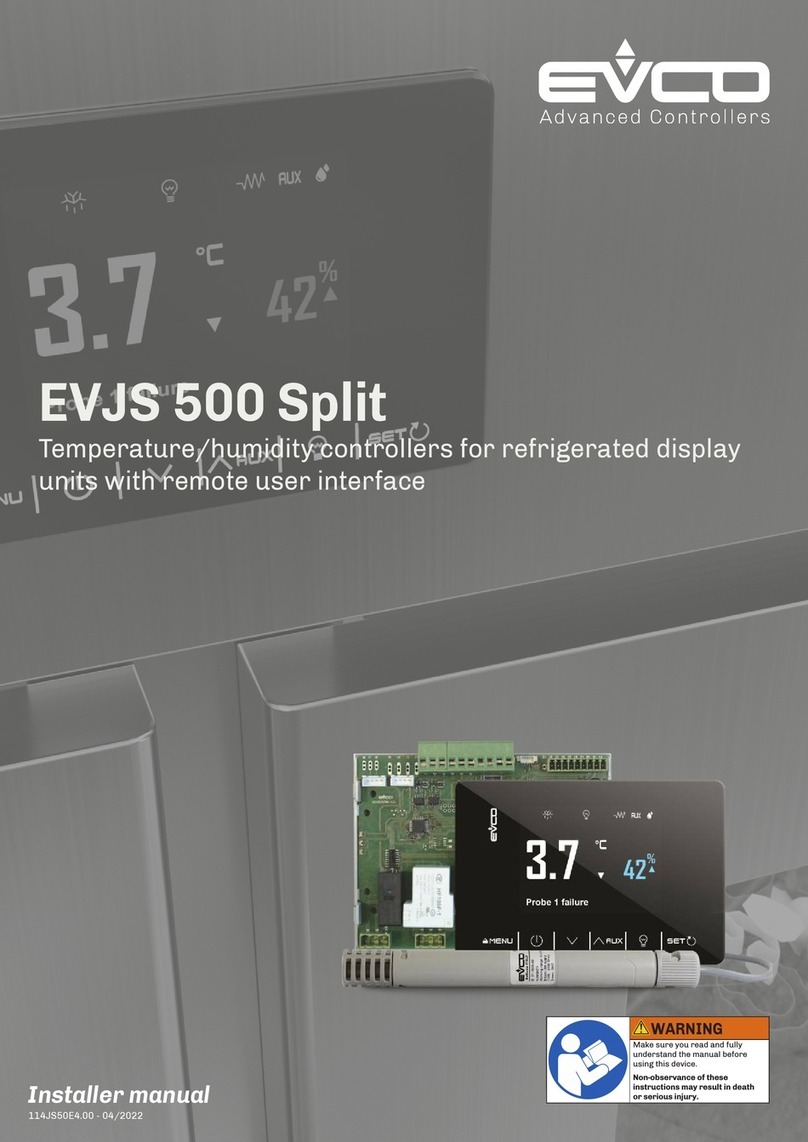
Evco
Evco EVJS 500 Split Installer manual

Honeywell
Honeywell Tema-Voyager Compact user guide

